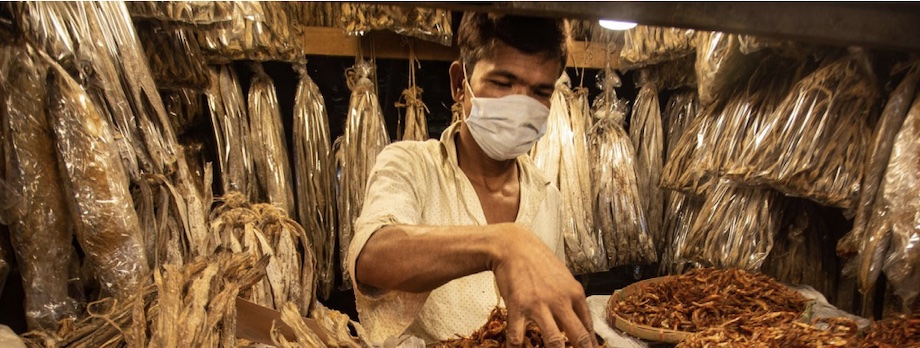The role of aquatic loss and waste in sustainable healthy diets
Omar Peñarubia, 28 June 2021
Last May 2021, UN Nutrition launched a discussion paper, which aims to build consensus on the role of aquatic foods in sustainable healthy diets, presenting the breadth of evidence available to inform and steer policy, investments and research to make full use of the vast potential of aquatic foods in delivering sustainable healthy diets and meeting the Sustainable Development Goals (SDGs).
The virtual launch event invited the discussion paper's authors and a list of distinguished panel of food and nutrition security experts who presented their insights leading to the discussion on shaping research, policy and investments that harness the potential of aquatic foods to achieve the Sustainable Development Goals.
The discussion paper features a section on the reduction of food loss and waste and how it can contribute to sustainable healthy diets. Aquatic food, particularly aquatic animals are a rich source of multiple micronutrients, fatty acids and animal protein which are important for improving nutrition and health outcomes in populations suffering from the “triple burden of malnutrition”. Globally, fish accounts for 17 percent of all animal protein consumed.
Food loss and waste occurs across fish value chains. High food loss can be observed in low-to-middle-income countries (LMIC) which is usually attributed to poor handling, processing and marketing practices. On the contrary, food waste is more associated to high-income countries at retail and consumer level.
Aquatic food loss and waste compromises the diets of millions of people, especially the poor, by depriving them of nutrient-rich foods. To reduce loss particularly during peak fishing season and enable the consumption of fish throughout the year, shelf-stable aquatic food products that can be easily distributed and consumed throughout times of low availability must be developed. Furthermore, efforts to develop better, climate-smart and gender-sensitive processing, infrastructure and services must be made to reduce loss and waste. The conversion of processing by-products such as fish heads and bones into products for human consumption can be a feasible solution.
Find out more about reducing food loss and waste in fish value chains here.

